Do you have a shortage of time but dream of Vietnam? This Hanoi travel guide is crafted to help international travellers experience the very best of the city in just 3 days and 2 nights. Whether you’re stopping by on a longer Southeast Asia trip or planning a short cultural escape, Hanoi delivers an unforgettable mix of history, cuisine, and charm.
In just 72 hours, you’ll explore ancient Buddhist temples, wander through atmospheric streets built during the French colonial period, and discover why Hanoi is known as the cultural heart of Vietnam. With each turn of the alley, sizzling food stalls and hidden heritage sites reveal themselves, offering the perfect balance of energy and tranquillity.

This Hanoi travel guide is ideal for first-time international visitors, solo adventurers, couples, or anyone looking to truly connect with Vietnamese culture in a short amount of time.
1. Introduction to Hanoi
Hanoi is Vietnam’s capital and one of the country’s most popular destinations for global travelers. Located in the northern region along the Red River Delta, it’s a city that blends centuries-old temples with vibrant boulevards and urban buzz. With over 8 million residents, Hanoi pulses with motorbike traffic, food carts, lakeside strolls, and traditional charm.
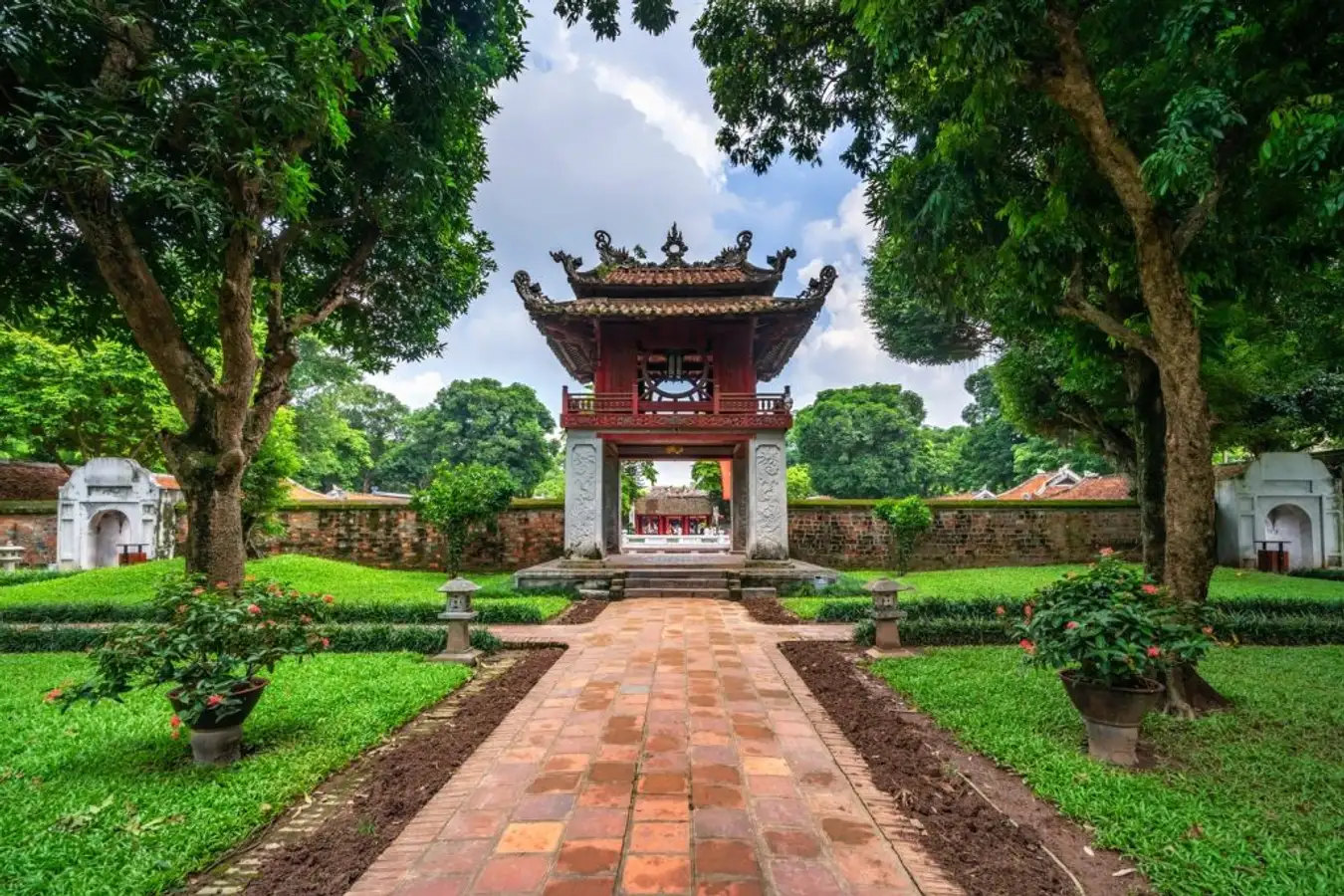
Known as the cultural and political heart of Vietnam, Hanoi is often the first stop for travelers looking to discover authentic Vietnamese life. Its diverse layers: historic, artistic, and culinary make it a must-see on any Vietnam travel journey. Whether you’re into history, photography, or food, exploring Hanoi provides a deep dive into Vietnam’s spirit.
2. Geography of Hanoi
Hanoi is located in northern Vietnam, approximately 1,760 kilometres north of Ho Chi Minh City and just 100 kilometres from the Chinese border. The city sits on the western bank of the Red River and is surrounded by low hills and fertile farmland, making it both a cultural and geographic hub.
The city is divided into several districts, with the Hoan Kiem District being the most popular for tourists. This central area is home to the Hanoi Old Quarter, Hoan Kiem Lake, the French Quarter, and many of the city’s top hotels, restaurants, and historical sites.
Other districts like Ba Dinh (where the Ho Chi Minh Mausoleum is located), Tay Ho (known for expat living and West Lake), and Dong Da (home to ancient pagodas and universities) each offer unique glimpses into Hanoi’s diverse urban life.
Hanoi’s compact layout and walkable central neighbourhoods make it easy to explore in just a few days, ideal for a 3-day Hanoi itinerary.
3. A brief history of Hanoi
Hanoi’s origins trace back over 1,000 years. It was declared the capital in 1010 by Emperor Ly Thai To, who renamed it Thang Long or “Rising Dragon.” Through the centuries, it served as a royal capital during the Ly, Tran, and Le dynasties.
The French colonial period, beginning in the late 19th century, left a major architectural imprint: wide boulevards, mansions, and opera houses. From 1954, Hanoi became the capital of North Vietnam, playing a pivotal role in the Vietnam War. After reunification in 1976, it resumed its place as the official national capital.
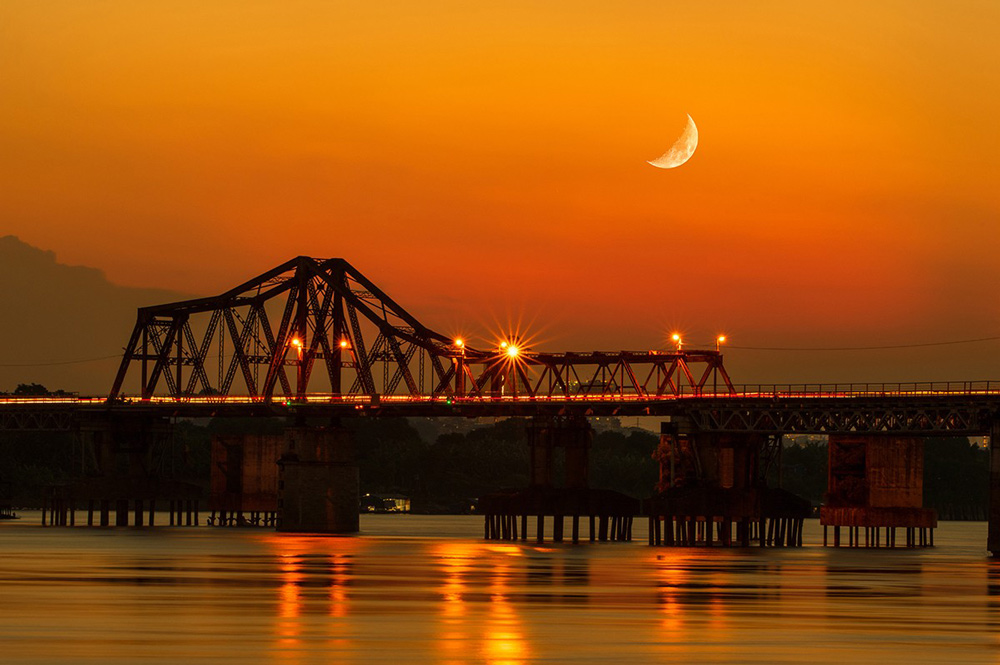
Today, modern Hanoi is a dynamic fusion of old and new, a city where ancient temples and Confucian monuments coexist with high-rise buildings, boutique hotels, and vibrant cafés. Its historical depth, cultural pride, and welcoming spirit make it one of the best places to visit in Vietnam.
Day 1: Ancient traditions & iconic sights
1. Hanoi Old Quarter – A Living museum of culture
Your Hanoi journey begins in the vibrant heart of the city: the Old Quarter, an enchanting maze of 36 streets named after the traditional goods once sold there like Hàng Bạc (Silver Street) and Hàng Đào (Silk Street). This district is the soul of the capital, where colonial architecture blends with timeworn temples, buzzing scooters, and the sizzle of street food carts on every corner.
Wander past rows of yellow-painted buildings, flower carts, and vintage shophouses. As the sun sets, head toward Hoan Kiem Lake, where locals gather for tai chi, couples stroll hand in hand, and photographers capture twilight over the Turtle Tower (Tháp Rùa), a beloved symbol of Hanoi. The tranquil lake offers a soft introduction to the city’s rhythm, which is both meditative and energetic.
2. Ngoc Son Temple & The Huc Bridge
At the northern end of Hoan Kiem Lake, cross the iconic Huc Bridge, painted a cheerful vermillion red, and enter Ngoc Son Temple (Temple of the Jade Mountain). This sacred site, dating back to the 19th century, honors General Tran Hung Dao, a national hero known for defeating Mongol invaders.
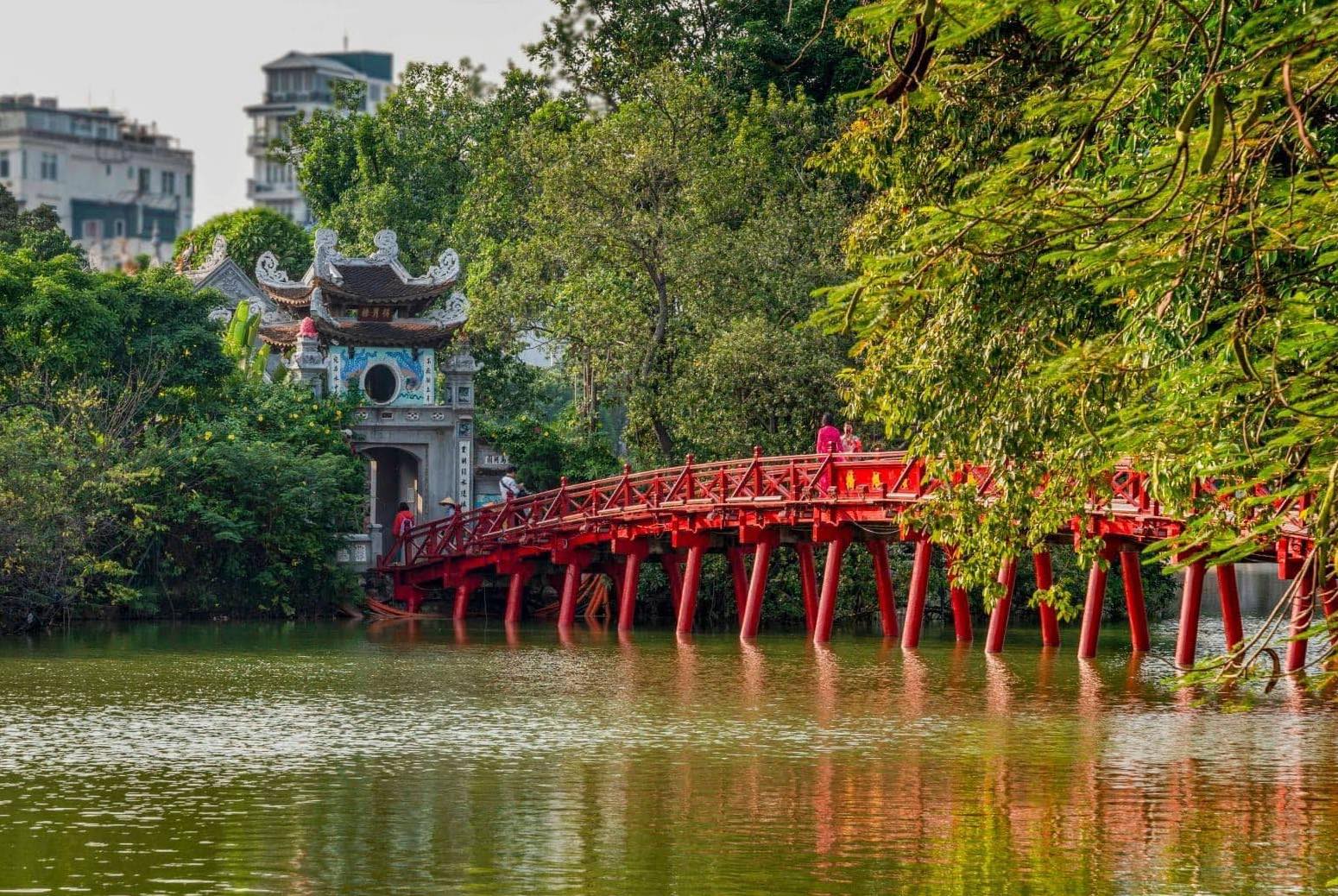
Inside, you’ll find ancient altars, turtle statues, and incense spirals curling through the air. Though it sits in the middle of bustling Hanoi, the temple offers a spiritual moment of stillness, perfect for reflection and a few serene photos as part of your cultural exploration.
3. Temple of Literature & Imperial Citadel
Next, head west to visit the Temple of Literature (Văn Miếu), Vietnam’s first university, founded in 1070. Dedicated to Confucius, it’s a place of great scholarly and historical significance, with stone steles engraved with the names of past graduates. The layout includes five tranquil courtyards, lotus ponds, and ancient trees each whispering stories from Vietnam’s feudal era.
Nearby, explore the Imperial Citadel of Thang Long, a UNESCO World Heritage Site that served as the political centre of ancient Vietnam for over 1,000 years. Walk through archaeological ruins, imperial gates, and a royal flag tower that testify to Hanoi’s central role in dynastic and colonial eras. It’s an eye-opening glimpse into the nation’s layered past.
4. Ho Chi Minh Mausoleum Complex
No Hanoi travel guide is complete without a visit to the Ho Chi Minh Mausoleum, the final resting place of the revered leader affectionately known as “Uncle Ho.” His body lies in a glass sarcophagus within a solemn marble structure, guarded by white-uniformed soldiers.
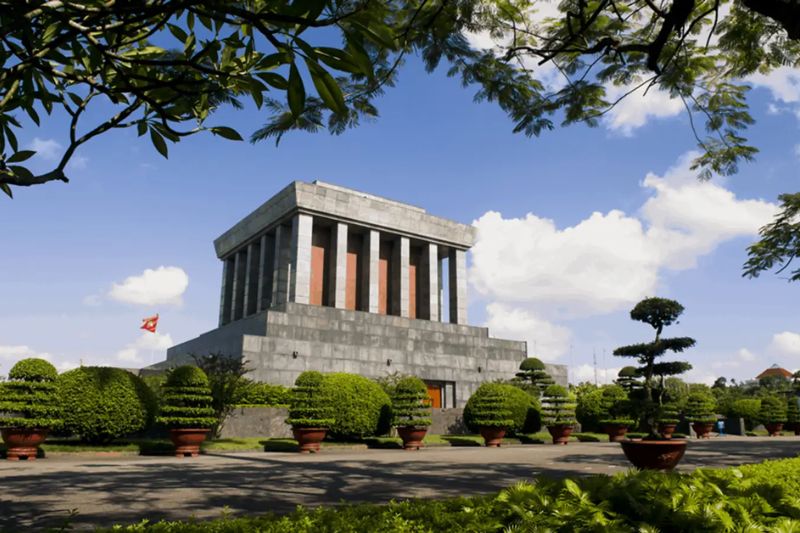
Beyond the mausoleum, explore the surrounding Presidential Palace Gardens, the Ho Chi Minh Stilt House, where he lived a modest life and the One Pillar Pagoda, a small yet iconic Buddhist temple built to resemble a lotus flower. This area encapsulates Vietnam’s revolutionary history and spiritual values in one powerful visit.
Evening: Thang Long Water Puppet Show & Dinner
End your first day with one of Hanoi’s most unique cultural experiences: the Thang Long Water Puppet Show. Originating from the rice fields of the Red River Delta, this art form features wooden puppets performing on a water stage, accompanied by live traditional music and Vietnamese folk tales.
After the show, head back into the Old Quarter for dinner. Choose from a wide range of eateries, from upscale Vietnamese fusion to rustic stalls selling bun cha and nem cua be (crab spring rolls). The lively streets and glowing lanterns provide a festive end to your immersive first day in Hanoi.
Day 2: Colonial charm & cultural immersion
1. French Quarter & Phan Dinh Phung Street
Begin your second day with a stroll through the elegant French Quarter—Hanoi’s most graceful neighborhood. This district showcases wide boulevards lined with ancient tamarind trees, pastel-colored colonial buildings, embassies, and charming sidewalk cafés. Walking along Phan Dinh Phung Street, considered one of the most beautiful streets in Hanoi, you’ll see French-era villas and government buildings that speak to the city’s time as the capital of French Indochina.

Stop by St. Joseph’s Cathedral, a stunning neo-Gothic structure that resembles Notre-Dame de Paris. Built in 1886, it’s the oldest church in Hanoi and a peaceful place to observe the city’s blend of Catholic and Vietnamese spiritual traditions. The nearby Ly Thai To Park offers a quiet green space to relax with a view of the Hoan Kiem Lake before heading deeper into Hanoi’s rich artistic side.
2. Hanoi Opera House & Fine Arts Museum
Continue your cultural immersion with a visit to the Hanoi Opera House, an architectural gem modeled after Paris’s Palais Garnier. With its grand pillars and sweeping staircases, the Opera House hosts live performances ranging from Vietnamese folk shows to ballet and symphony concerts. Guided tours are available, providing insights into both the building’s architecture and its role in Vietnamese history.
A short drive away is the Vietnam Fine Arts Museum, where you’ll find a stunning collection of traditional and contemporary Vietnamese art. From lacquerware and silk paintings to Cham sculptures and wartime propaganda art, this museum gives you a visual journey through Vietnam’s complex identity and cultural evolution. It’s a must-see for any art lover exploring Hanoi.
3. Tran Quoc Pagoda & West Lake
In the afternoon, make your way to West Lake (Hồ Tây), the largest freshwater lake in Hanoi. A beloved spot for both locals and tourists, it offers cool breezes, picturesque views, and peaceful escapes from the city bustle. Along the lakeside, stop at Tran Quoc Pagoda, the oldest Buddhist temple in Hanoi, originally built in the 6th century.

The pagoda sits on a small island connected by a red bridge and is especially photogenic at sunset. With its lotus-shaped stupa and ancient bodhi trees, Tran Quoc is not just a religious site but a symbol of Hanoi’s deep-rooted spiritual life. Nearby cafés and teahouses by the lake offer scenic spots for a relaxing drink or snack.
4. Vietnam Museum of Ethnology
Later in the day, dive deeper into the cultural fabric of Vietnam at the Vietnam Museum of Ethnology. This engaging museum showcases the customs, clothing, rituals, and architecture of Vietnam’s 54 ethnic groups. The indoor exhibitions are well-curated and bilingual (Vietnamese-English), while the outdoor area features life-sized replicas of traditional stilt houses from the Tay, Ede, and Hmong communities.
Visitors can walk through these full-scale homes, offering a rare hands-on glimpse into the rural and highland cultures that often go unseen in Vietnam’s urban centers. This museum is perfect for understanding the country’s diversity and the living traditions that continue to thrive.
Dinner in the French Quarter
End your culturally rich day back in the French Quarter, where modern elegance meets old-world charm. Enjoy a fine dining experience at a restaurant overlooking the Opera House or tucked inside a colonial villa. Whether you choose French-Vietnamese fusion cuisine or upscale Vietnamese dishes with a modern twist, this evening will be a memorable highlight.
Day 3: Local life & street food adventures
1. Dong Xuan Market & Cyclo Ride
Begin your final day in Hanoi with a visit to Dong Xuan Market, the city’s largest indoor market and a bustling hub of local life. Built during the French colonial period, the market is filled with an endless array of goods fresh produce, dried seafood, handicrafts, souvenirs, and clothing. It’s the perfect place to buy local snacks like dried jackfruit, lotus seeds, or Vietnamese coffee to bring home.
As you wander through its lively aisles, you’ll hear the sounds of bargaining and catch the aroma of freshly cooked street food wafting from the small eateries tucked inside the market. It’s also a great spot to take in the daily rhythm of Hanoi’s residents, from shopkeepers arranging their goods to families enjoying a quick breakfast of bánh cuốn or bún riêu.
After exploring the market, hop on a cyclo (traditional bicycle rickshaw) for a slow-paced tour through Ba Dinh and the surrounding neighborhoods. This unique mode of transport lets you absorb the city’s atmosphere at a comfortable pace while passing iconic sites like the Flag Tower of Hanoi and shaded colonial boulevards.

2. Hanoi Street Food Tour
No visit to Hanoi is complete without experiencing its legendary street food culture. Join a guided Hanoi street food tour, where a local expert will lead you through hidden alleyways and family-run food stalls. You’ll taste phở (Vietnam’s iconic noodle soup), bánh cuốn (steamed rice rolls filled with pork and mushrooms), bún chả (grilled pork with vermicelli noodles), and the famous egg coffee, a creamy, sweet Hanoi specialty invented during the French colonial era.
This food adventure is more than just a meal; it’s a cultural journey. Guides often share fascinating stories about the history of each dish, the families who have perfected them over generations, and the unique cooking techniques that define northern Vietnamese cuisine. You’ll also have a chance to sample seasonal fruits, crispy spring rolls, and local favorites
3. Rooftop View & Farewell Drink
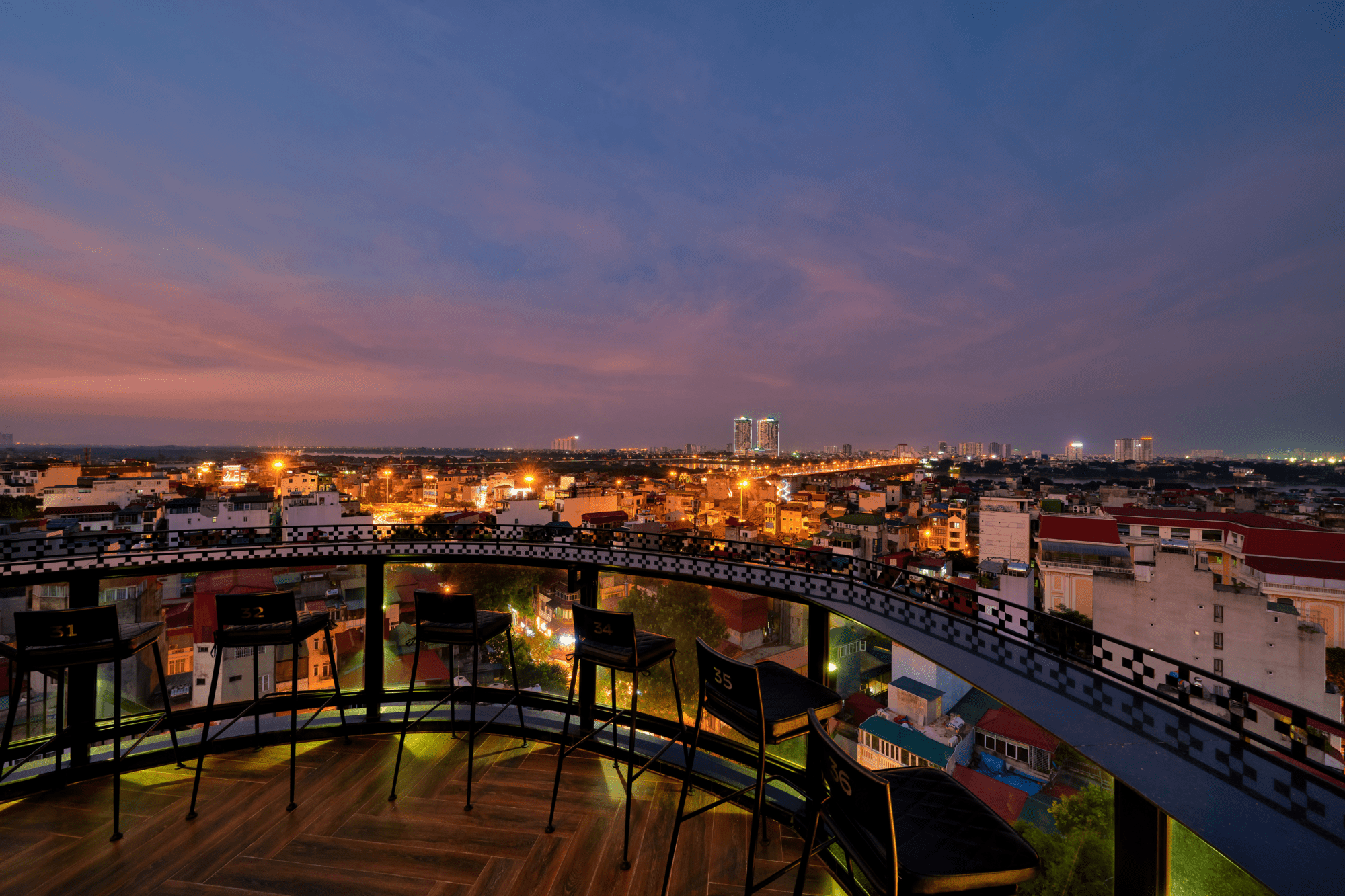
As your 3-day Hanoi journey comes to a close, treat yourself to an evening drink at one of the city’s scenic rooftop bars. A rooftop setting is the perfect way to reflect on your time in Hanoi. As the sun sets over the city skyline, you’ll see how Hanoi blends old-world charm with modern energy, temple rooftops stand alongside glass skyscrapers, and the streets below glow with lanterns and scooter headlights.
When is the best time to visit
The ideal time for this Hanoi travel guide itinerary is during the fall (September to November) and spring (March to April) seasons. During these months, the weather in Hanoi is at its most pleasant—temperatures are mild, humidity levels are lower, and rainfall is minimal, making it ideal for outdoor activities and sightseeing on foot.
In the fall, Hanoi is especially beautiful with golden sunlight, clear skies, and the romantic sight of autumn leaves gently falling around Hoan Kiem Lake and tree-lined boulevards like Phan Dinh Phung. The cool breeze in the mornings and evenings provides the perfect atmosphere for sipping egg coffee in a sidewalk café or exploring the Old Quarter on foot.
In the spring, the city comes alive with blooming flowers, festive energy, and mild temperatures ranging from 18°C to 25°C (64°F to 77°F). It’s also the time leading up to or following the Tet (Lunar New Year) holiday, offering visitors a chance to witness cultural traditions and vibrant street decorations.
While Hanoi can be visited year-round, summer (May to August) brings hot and humid weather with occasional heavy rains, and winter (December to February), though mostly dry, can be chilly and misty, especially in the mornings. If you want to enjoy Hanoi’s historical sites, lakeside views, and food tours comfortably, planning your visit in spring or fall is highly recommended for the best experience.
Hanoi travel tips
-
Use Grab or traditional taxis; cyclos offer charm but negotiate up front.
-
Carry Vietnamese Dong (VND); cash is preferred in markets and street stalls.
-
Learn simple phrases like xin chào (hello) and cảm ơn (thank you)
-
Traffic is intense: cross slowly and confidently.
-
Stay near Hoan Kiem / Old Quarter for convenience and walkability.
This Hanoi travel guide offering a 3-day, 2-night itinerary introduces international travelers to the city’s highlights. heritage sites, street food, colonial charm, and cultural immersion. Perfect for those short on time but eager to connect with Vietnam’s vibrant capital.
PBJP Travel specializes in designing private tours for families & small groups from 1 to 50 guests. Private car service with pick-up and drop-off in Japan, Korea, Taiwan and Vietnam.
Support:
・4~50-seat car in Japan, Korea, Taiwan and Vietnam.
・Guide living and working in the local country.
・Visa
・Book hotel upon request
・Book entertainment tickets
・Restaurant consultation, reservation


